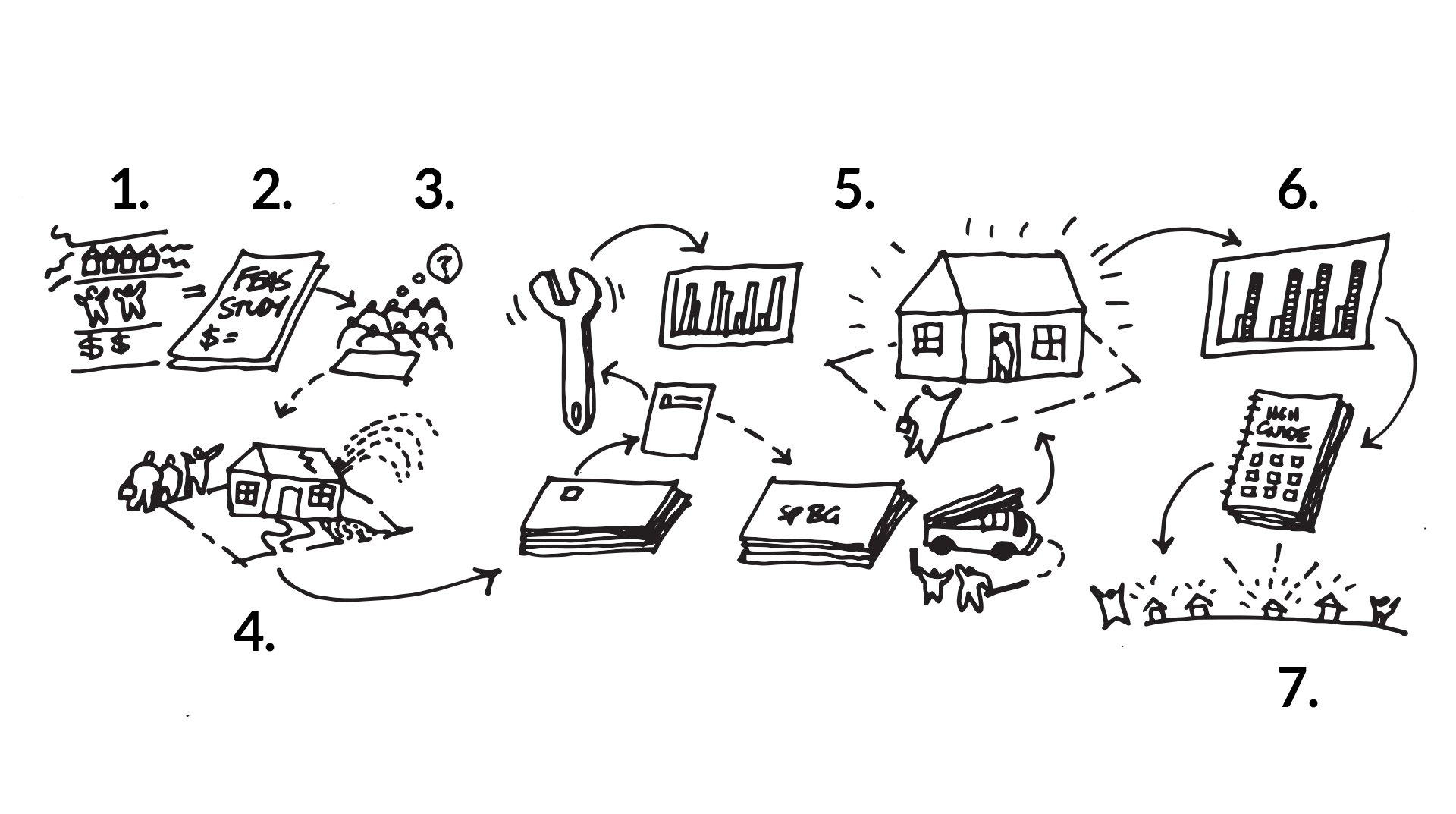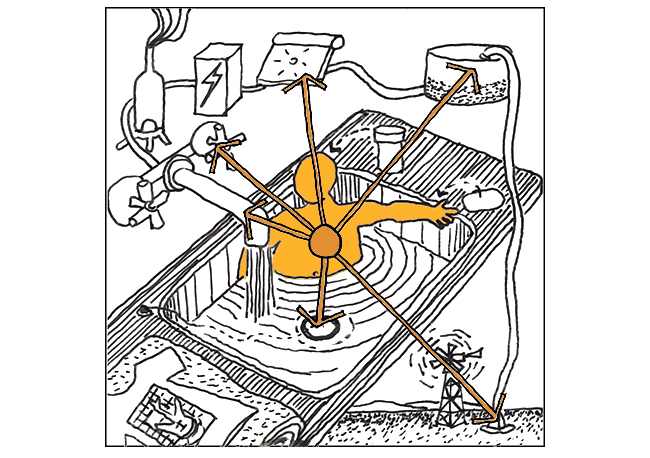Housing for Health
The vast majority of Healthabitats work is called Housing for Health (HfH). This is an evidenced based methodology founded on the Healthy Living Practices (HLPs) aimed at improving health through the living environment.
The seven-stage methodology:

Our 7 stage methodology, beginning and ending with community.
Stage 1 – Setting up the project: project planning
Projects are selected in collaboration with community housing groups. Internationally, projects come from community groups or organisations already working with the community.
Stage 2 – Community selection, feasibility and budget preparation
Healthabitat ensures the project will have a good chance of delivering improved function of the living environment by sending an experienced project manager to complete a Feasibility Report to check project viability. If the Feasibility Report reveals problems, the project manager will describe the issues and suggest ways to improve them so a project can commence in the future. A Project Licence Agreement (PLA) is negotiated and a Project Licence Holder (PLH) identified.
Stage 3 – Preparing to Implement Survey-Fix 1
Healthabitat nominates an accredited project manager who selects a project team best suited to deliver the Housing for Health survey-fix. Teams are made up of local community members, environmental health workers, architects and qualified trades. The survey teams are selected and trained within the local community as a priority, team members not within the community must bring with them qualified skills and technical expertise.
Stage 4 – Survey-Fix 1: Starting assessment and fix work on day one of any project.
This involves surveying and testing a standard list of over 250 essential safety and health hardware items for every house and the surrounding yard area. The work is completed by several teams of 4-6 local people led by an accredited Team Leaders. The Team Members receive some preliminary safety, testing and fix training. Minor fix work by the Survey-Fix Teams is encouraged. The survey information is then entered into an ‘in-field’ database. Job sheets are immediately generated to enable immediate urgent fix work to be completed by licensed trades, with larger or less urgent jobs being prioritised and allocated to future works. The list of immediate fix work is prioritised by the Healthy Living Practices outlined in Housing for Health – the Guide.
Stage 5 – All Fix Work: fixing the house continues until the money runs out.
Essential trades, with the support of some members of the original Survey-Fix Team complete the more extensive fix work, identified in the Survey-Fix 1 stage, to improve function of the house and surrounding living environment. This is sometimes referred to as the Capital Upgrade stage. This stage can take from 6 – 12 months depending on project scale and location and consumes the bulk of the project budget. The works can include new wet areas to houses where the existing bathrooms and laundries were found to be beyond critical fix work during Survey-Fix 1. The project manager will oversee this work.
Stage 6 – Survey-Fix 2: Checking fix work was done correctly and re-testing the function of each house
Survey-Fix 2 allows the checking of all the work carried out since the beginning of the project and a comparison of the function of all houses before and after the work done by the Housing for Health project. Checking the work prescribed by Survey-Fix 1 has been completed by the trades, the quality of work and re-testing house performance occurs at this stage. A similar process to Survey-Fix 1 occurs using local Indigenous Teams, Team Leaders and licensed trades available to complete any last fix work.
Stage 7 – Reporting Back: giving the results back to all those involved in the process
A final report and meeting with the participating community identify how successfully the program improved house function and people’s living conditions. The detailed report contains information on all house function results, list of works completed, works still to be completed, reason the fix work was needed (routine maintenance, poor initial construction, damage), costs associated with all stages of the project and cost compared to health function gain per house.










